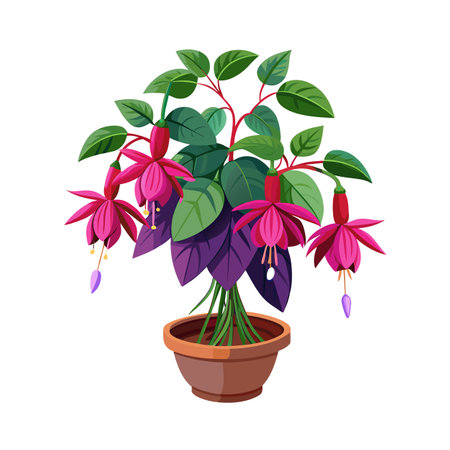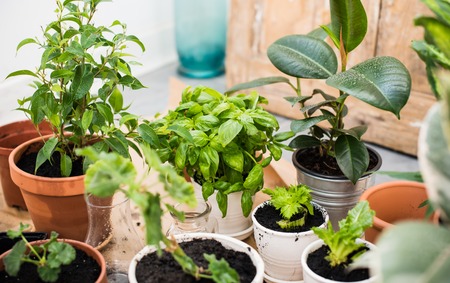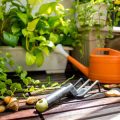Why Start an Indoor Garden?
Imagine stepping into your living room and breathing in fresh, clean air—thanks to the lush green plants thriving indoors. Starting an indoor garden isn’t just about adding a touch of nature to your home; it’s a simple way to boost your well-being every day. Houseplants are natural air filters, helping to remove toxins and improve the quality of the air you breathe. Beyond health, tending to plants can be incredibly calming, offering a mindful escape from daily stressors. Plus, growing your own greenery is a small but powerful step toward living more sustainably, reducing your carbon footprint and bringing a bit of eco-friendly practice right into your space. Whether you’re looking for a mood lift, cleaner air, or a more sustainable lifestyle, starting an indoor garden is an easy win for both you and the planet.
Essential Supplies for Beginners
Starting an indoor garden doesn’t require fancy gadgets or a green thumb—you just need the right eco-friendly tools and locally sourced materials. Choosing sustainable supplies not only helps the planet but also supports your community. Here’s a straightforward guide to what you’ll need to get growing:
Must-Have Tools & Materials
| Item | Eco-Friendly Tip | Locally Available? |
|---|---|---|
| Pots & Containers | Opt for biodegradable pots, upcycled jars, or ceramic planters from local artisans. | Yes – Check farmers’ markets or local hardware stores. |
| Potting Mix | Choose organic, peat-free soil to protect local wetlands. | Yes – Many U.S. nurseries offer regional blends. |
| Watering Can/Spray Bottle | Reuse glass bottles or purchase stainless steel options. | Yes – Try thrift shops or garden centers. |
| Grow Lights (if needed) | Select energy-efficient LED grow lights to save on electricity. | Yes – Hardware stores usually stock these year-round. |
| Hand Tools (trowel, pruners) | Look for tools with wooden handles from responsibly managed forests. | Yes – Support small businesses nearby. |
| Compost Bin/Container | Create your own using a repurposed bucket or buy one made from recycled materials. | Yes – DIY or check local eco-shops. |
Sourcing Sustainably in Your Community
If possible, shop at local garden centers, co-ops, or even swap supplies with neighbors. Supporting American-made products and reusing items cuts down on carbon emissions and waste. Remember: The most sustainable indoor garden is one that makes use of what you already have!

3. Top Foolproof Plants for Indoor Gardening
Starting your indoor garden journey is all about choosing the right plants that can thrive with minimal fuss. Across the U.S., there are several beginner-friendly options that not only beautify your space but also support eco-conscious living. Here are some top picks:
Resilient Leafy Greens
If you’re eager to grow something edible, leafy greens like spinach, kale, and lettuce are perfect choices. These greens adapt well to indoor conditions and only require moderate sunlight. Plus, harvesting your own salad leaves reduces packaging waste and supports a sustainable lifestyle.
Native Succulents
Succulents such as Echeveria and Aloe Vera are adored from coast to coast for their drought-tolerant nature and low water needs. Many varieties are native to America’s arid regions, making them especially tough and resilient indoors. Their ability to store water means less frequent watering—ideal for busy or forgetful plant parents.
Pothos: America’s Favorite Low-Maintenance Vine
The Pothos plant, often seen trailing in urban apartments and suburban homes alike, is virtually indestructible. It thrives in low light, purifies indoor air, and bounces back even if you miss a watering or two. This makes it an excellent choice for anyone just starting out.
Snake Plant: The Ultimate Air-Purifier
The Snake Plant, also known as Sansevieria, is another American staple for beginner gardeners. It tolerates neglect, survives in various lighting conditions, and helps filter toxins from your home’s air—making it both practical and planet-friendly.
Sustainable Practice Tip
No matter which plants you choose, opt for organic soil mixes and recycled planters when possible. Supporting local nurseries not only ensures healthy plants adapted to your region but also fosters a more sustainable gardening community.
4. Simple Care Tips for Thriving Plants
Keeping your indoor garden happy doesn’t have to be complicated. With just a few mindful habits, you’ll see your plants flourish—and you can do it sustainably, too! Here’s how to make plant care easy, eco-friendly, and rewarding for beginners.
Water Wisely
Overwatering is the #1 killer of houseplants for newbies. Instead of watering on a strict schedule, check your soil by sticking your finger an inch deep—if it feels dry, it’s time to water. Use room-temperature water and try collecting rainwater or reusing leftover drinking water to minimize waste.
| Plant Type | How Often to Water |
|---|---|
| Succulents & Cacti | Every 2-3 weeks |
| Pothos & Snake Plant | Every 1-2 weeks |
| Spider Plant & Peace Lily | Once a week |
Let There Be (The Right) Light
Plants need light to thrive, but not all need the same amount. Place sun-loving species near south-facing windows and shade lovers in indirect light. Rotate your pots every few weeks so all sides get their share of sunlight—this prevents lopsided growth and helps your plants grow strong.
Eco-Smart Lighting Hacks:
- Use energy-efficient LED grow lights if your space lacks natural sunlight.
- Position mirrors to reflect daylight onto darker corners for a natural boost.
Sustainable Maintenance Routines
Caring for plants should be good for the planet, too. Wipe dust off leaves with a soft, damp cloth (or an old T-shirt) to help them absorb more light. Compost dead leaves and trimmings instead of tossing them in the trash. Skip chemical fertilizers—opt for organic compost or worm castings for gentle, natural nutrition.
Your Green Routine Checklist:
- Reuse containers or thrifted pots for new plants.
- Start a mini compost bin with kitchen scraps for fertilizing.
- Avoid single-use plastics—choose biodegradable plant labels or recycled materials instead.
By weaving these simple and sustainable practices into your indoor gardening routine, you’ll nurture a healthy green space that supports both your wellbeing and the health of our planet.
5. Sustainable Practices for a Greener Home
When starting your indoor garden, making eco-friendly choices not only benefits your plants but also helps create a healthier home and planet. Adopting sustainable practices is easier than you think—even for beginners. Composting kitchen scraps like vegetable peels and coffee grounds provides nutrient-rich food for your plants and reduces landfill waste. Set up a small countertop compost bin or a worm composting system to turn leftovers into plant gold. Water conservation is another simple way to go green: collect rainwater with a barrel or reuse water from rinsing veggies to hydrate your indoor plants. Many houseplants thrive with less water than you’d expect, so avoid overwatering and let the soil dry out between drinks. Don’t forget about reusing materials; get creative with containers by repurposing glass jars, old mugs, or even vintage bowls as plant pots. Upcycling not only saves money but also gives your indoor garden unique character. By weaving these earth-friendly habits into your gardening routine, you’ll nurture both your plants and the planet—one leafy sprout at a time.
6. Common Mistakes and How to Avoid Them
Every indoor gardener, especially beginners, encounters a few bumps on the road. Understanding these common mistakes—and learning how to sidestep them—will help your indoor garden flourish in any American home.
Overwatering or Underwatering
This is the classic pitfall. Many newbies assume their plants need daily watering, but most foolproof houseplants thrive on less. Check the top inch of soil with your finger; if it’s dry, it’s time to water. Using pots with drainage holes—widely available at stores like Home Depot or Target—prevents soggy roots and root rot.
Placing Plants in the Wrong Light
Not all windows are created equal! American homes often have north-, south-, east-, or west-facing windows, each offering different light intensity. Snake plants and pothos tolerate low light, making them perfect for apartments or rooms without much sun. For sun-loving herbs, choose a bright south-facing window or supplement with an energy-efficient LED grow light.
Ignoring Humidity Levels
Many U.S. regions, particularly during winter, experience dry indoor air from central heating. Grouping plants together or using a tray filled with water and pebbles can help boost humidity around your green friends. For eco-conscious gardeners, skip disposable humidifiers and opt for reusable solutions that last season after season.
Poor Potting Choices
Reusing old containers is great for sustainability, but make sure they’re clean and provide proper drainage. Avoid overcrowding plants; give each one enough space to breathe and grow strong roots. Upcycle glass jars or ceramic mugs as quirky planters—just remember to add a layer of pebbles at the bottom if there’s no hole.
Neglecting Regular Checks
Even foolproof plants appreciate a little TLC. Take a few minutes weekly to check for pests, yellowing leaves, or signs of stress. This mindful practice not only protects your plants but also helps you connect with your indoor ecosystem—a small yet meaningful act of environmental stewardship.
By steering clear of these common missteps and adopting simple, sustainable solutions tailored for American homes, you’ll nurture both your confidence and your indoor garden, creating a greener haven right where you live.


